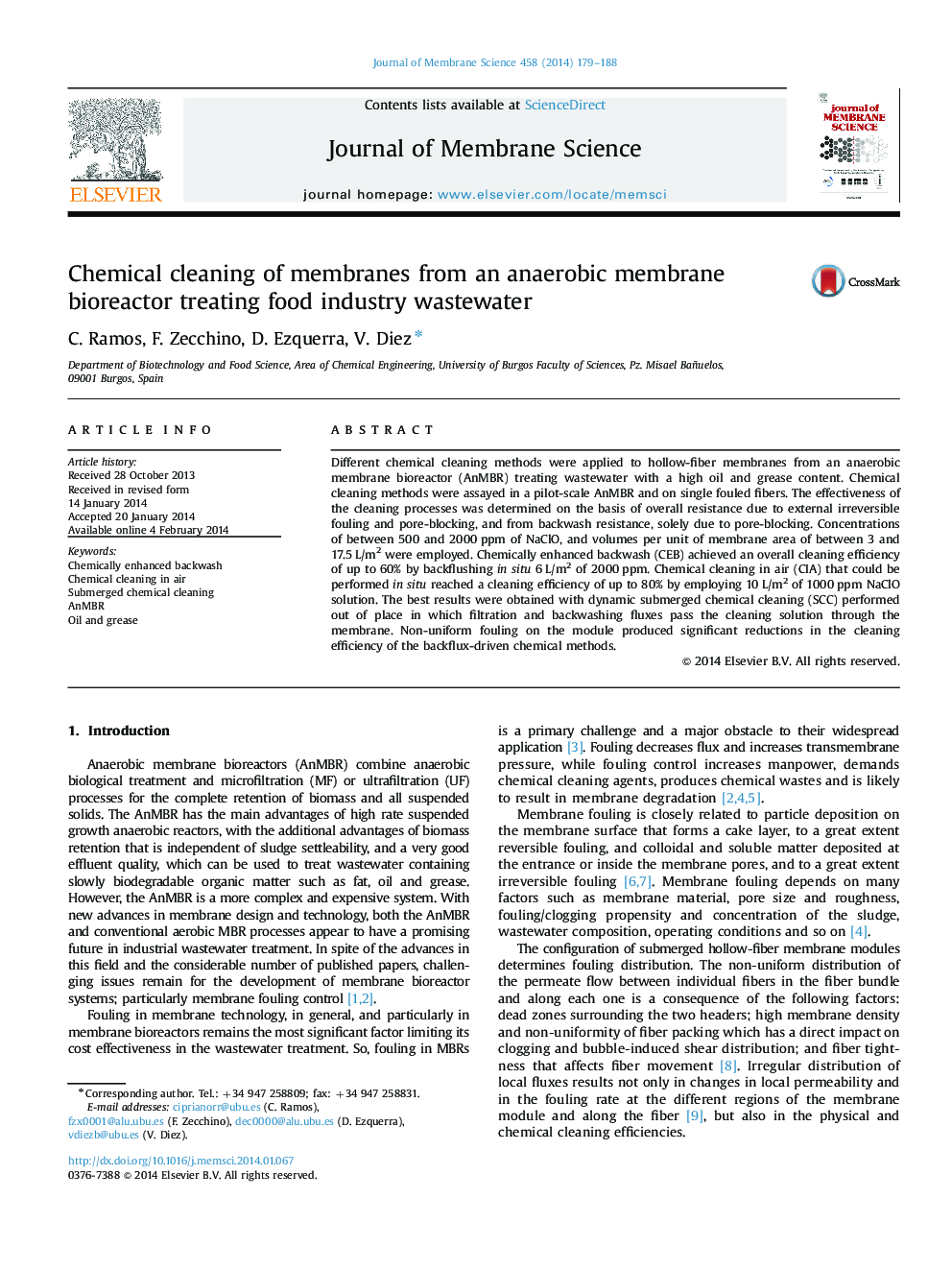| Article ID | Journal | Published Year | Pages | File Type |
|---|---|---|---|---|
| 7022277 | Journal of Membrane Science | 2014 | 10 Pages |
Abstract
Different chemical cleaning methods were applied to hollow-fiber membranes from an anaerobic membrane bioreactor (AnMBR) treating wastewater with a high oil and grease content. Chemical cleaning methods were assayed in a pilot-scale AnMBR and on single fouled fibers. The effectiveness of the cleaning processes was determined on the basis of overall resistance due to external irreversible fouling and pore-blocking, and from backwash resistance, solely due to pore-blocking. Concentrations of between 500 and 2000Â ppm of NaClO, and volumes per unit of membrane area of between 3 and 17.5Â L/m2 were employed. Chemically enhanced backwash (CEB) achieved an overall cleaning efficiency of up to 60% by backflushing in situ 6Â L/m2 of 2000Â ppm. Chemical cleaning in air (CIA) that could be performed in situ reached a cleaning efficiency of up to 80% by employing 10Â L/m2 of 1000Â ppm NaClO solution. The best results were obtained with dynamic submerged chemical cleaning (SCC) performed out of place in which filtration and backwashing fluxes pass the cleaning solution through the membrane. Non-uniform fouling on the module produced significant reductions in the cleaning efficiency of the backflux-driven chemical methods.
Related Topics
Physical Sciences and Engineering
Chemical Engineering
Filtration and Separation
Authors
C. Ramos, F. Zecchino, D. Ezquerra, V. Diez,
